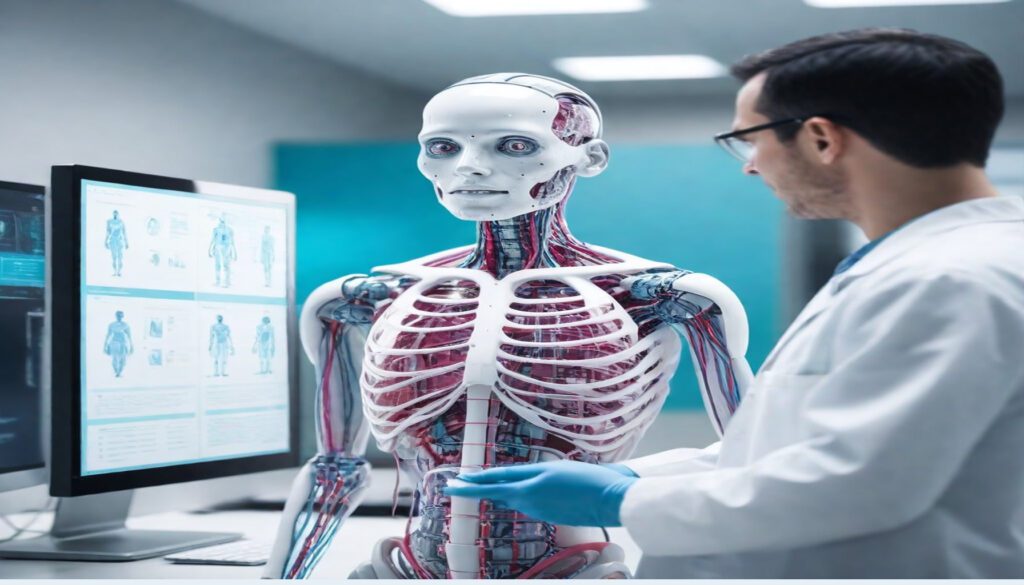Quantum AI: Merging Two Frontiers of Innovation
In the ever-evolving landscape of technology, two frontiers stand out for their potential to revolutionize entire industries: quantum computing and artificial intelligence (AI). Individually, each represents a leap forward in computational power and problem-solving capabilities. But what happens when these two frontiers converge? Welcome to the world of Quantum AI, where the principles of quantum mechanics and the power of artificial intelligence intersect to unlock unprecedented possibilities. In this blog, we’ll explore the exciting synergy between quantum computing and AI, and how their convergence is reshaping the future of innovation.
1 : Understanding Quantum Computing To comprehend the significance of Quantum AI, we first need to grasp the basics of quantum computing. Traditional computers rely on bits, which can be either 0 or 1. Quantum computers, on the other hand, use quantum bits or qubits, which can exist in multiple states simultaneously thanks to the phenomenon of superposition. This allows quantum computers to perform complex calculations at speeds that far surpass those of classical computers, opening the door to solving problems that were previously unsolvable.
2 : Exploring Artificial Intelligence Artificial intelligence, or AI, has already made significant strides in transforming industries and shaping our daily lives. From recommendation systems and language translation to autonomous vehicles and medical diagnostics, AI algorithms are powering a wide range of applications with their ability to learn, adapt, and make decisions without human intervention. However, as the complexity of AI tasks increases, so does the demand for computational power and efficiency.
3 : The Promise of Quantum AI Enter Quantum AI, where the computational capabilities of quantum computing meet the problem-solving prowess of artificial intelligence. By harnessing the power of quantum computing, AI algorithms can tackle even more complex and data-intensive tasks with unparalleled speed and efficiency. Quantum AI holds the promise of accelerating AI training and inference, optimizing complex optimization problems, and unlocking new insights from vast amounts of data.
4 : Applications of Quantum AI The potential applications of Quantum AI span across various industries and domains. In healthcare, Quantum AI could revolutionize drug discovery by simulating molecular interactions with unprecedented accuracy. In finance, it could optimize portfolio management and risk assessment models. In cybersecurity, it could enhance encryption and threat detection capabilities. The possibilities are endless, with Quantum AI poised to drive innovation across the board.
5 : Challenges and Considerations Despite its immense potential, Quantum AI also faces several challenges and considerations. The technology is still in its infancy, with practical quantum computers and quantum processors still in the experimental stage. Moreover, integrating quantum computing with AI algorithms poses technical challenges related to hardware compatibility, algorithm design, and error correction. Additionally, there are ethical and societal implications to consider, such as the potential impact on employment and privacy.
6 : Current Developments and Future Outlook Despite these challenges, significant progress is being made in the field of Quantum AI. Major tech companies, research institutions, and startups are investing in quantum computing research and exploring its potential applications in AI. As quantum hardware continues to advance and AI algorithms become more sophisticated, we can expect to see rapid advancements in Quantum AI in the coming years. The future of innovation is bright, with Quantum AI leading the way towards new frontiers of discovery and advancement.
Conclusion : In conclusion, Quantum AI represents a convergence of two frontiers of innovation that promises to reshape the future of technology and unlock new possibilities beyond our imagination. By combining the computational power of quantum computing with the problem-solving capabilities of artificial intelligence, Quantum AI has the potential to revolutionize industries, solve complex challenges, and drive progress towards a more advanced and interconnected world. As we continue to explore the possibilities of Quantum AI, one thing is certain: the future of innovation has never looked more exciting.
